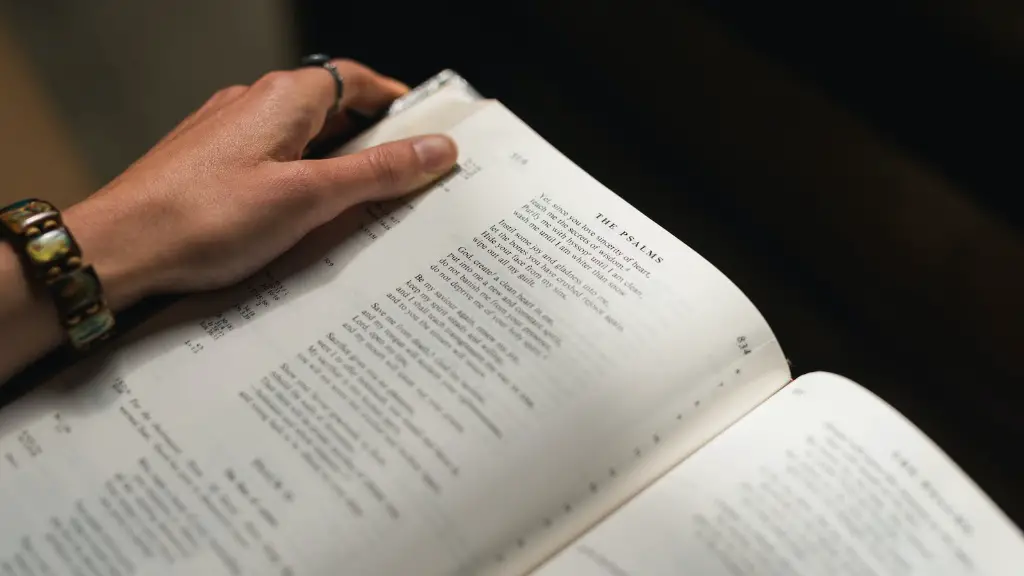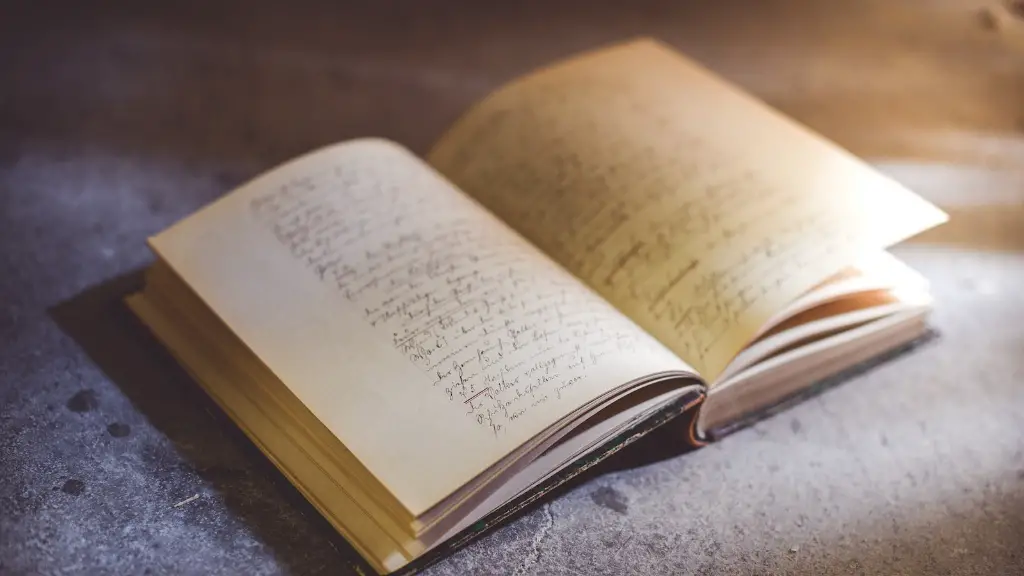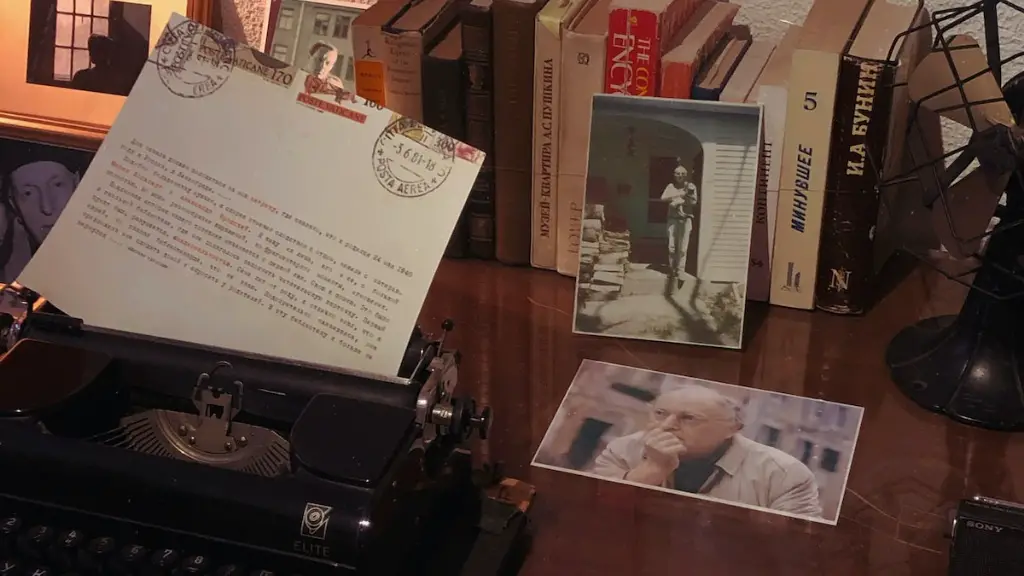Emily Dickinson is known for her use of symbolism in her poetry. Symbolism is a literary device in which a writer uses an object, person, or event to represent something else. In Dickinson’s poetry, she often uses objects to symbolize emotions or ideas. For example, in her poem “A narrow Fellow in the Grass,” the snake symbolizes fear. Dickinson uses symbolism to add depth and meaning to her poems.
There are a number of reasons why Emily Dickinson might have used symbolism in her work. Symbolism can be a powerful literary tool, allowing writers to express complex ideas and emotions in a concise and impactful way. For Dickinson, who was known for her concise and often cryptic poems, symbolism may have been a way to pack a lot of meaning into a few words. Additionally, Dickinson lived during a time when many Americans were increasingly interested in exploring mysticism and the supernatural, and symbolism may have allowed her to tap into this zeitgeist. Whatever her reasons, Emily Dickinson’s use of symbolism helped to make her one of the most innovative and influential poets of her time.
What is the symbolism in poems of Emily Dickinson?
Dickinson employs symbols to great effect in order to communicate the different stages of life, and the cycle thereof. The child, the field of grain, and the setting sun are all powerful symbols that help to establish the cyclical nature of life. The child represents new life, the field of grain represents the growth and fertility of life, and the setting sun represents the inevitability of death. By using these symbols, Dickinson is able to effectively communicate the different stages of life and the cycle that they all follow.
The carriage in “Because I could not stop for Death” symbolizes the journey from life to death. This journey begins when a personified version of “Death” comes to pick up the speaker, who admits that she was never going to stop for him on her own—he had to come to her. The carriage ride is a metaphor for the journey through life, with death as the driver. The speaker is passive throughout the poem, which reflects the way that many people view death as something that happens to them, rather than something they have any control over.
How is symbolism used in the poem What is the symbol
Symbolism is a literary device that can be used to represent ideas or emotions in a piece of writing. In symbolism, the symbols align with the overall tone and theme of the poem. For example, if the poem is about a difficult subject, the words may have a negative or morose tone, while the symbols may evoke images of cold or dark objects.
Symbols are important in a poem as they can represent a particular idea, theme, thing, person or meaning. This kind of art of practice is called symbolism. A poet uses symbolism to denote a particular action, word, mood, emotion in reference to another word.
What are the most significant features of Emily Dickinson’s poems?
Emily Dickinson is one of the most famous American poets, and her work is known for its unconventionality. Dickinson often wrote about taboo subjects, such as death and mortality, in a way that was both unique and deeply personal. Her poems are also characterized by their brevity, often being just a few lines long. Additionally, most of Dickinson’s poems are untitled, further emphasizing the individualism of her work. Dickinson’s poetry is also marked by her transcendentalist beliefs, which are reflected in her spiritual and mystical themes. Finally, Dickinson was known for her realistic portrayal of life, particularly in her depictions of the mundane.
Dickinson’s poem is an excellent example of an allegory. The characters in the poem represent different aspects of human nature, and the actions they take represent the choices we make in life. The person who died for beauty represents the superficial side of human nature, while the person who died for truth represents the more noble side. The interaction between the two characters is brief but revealing, and it shows that even though the two sides of human nature may be different, they can still understand and respect each other.
What does the sun symbolize in Because I could not stop for Death?
Death is often seen as a negative thing, but in this case, it is seen as a positive thing. It gives the speaker a chance to reflect on life from beginning to end. The children represent the beginning of life, while the setting sun represents the end. This is a good way to look at life, from start to finish.
The house is a metaphor for the grave. By using this familiar image, Dickinson wants to emphasize the speaker’s acceptance of death. She could have described a claustrophobic coffin, but instead chose a metaphor that would be familiar to her readers. The speaker is calm and comfortable with her impending death.
What were Emily Dickinson’s poems mainly about
Many of Emily Dickinson’s poems explore universal themes using images and everyday objects that were familiar to her. As a keen observer, Dickinson was able to distill the essence of these objects and capture the emotions they evoked. Through her poems, she was able to explore the human experience and offer new perspectives on life, death, and love.
Symbolism is a type of art that emphasizes on emotions and ideas instead of realism. It is linked with various artists and styles that focus on personal views and expressions. Symbolism allows artists to disclose reality in their own ways, through their own unique perspectives.
What literary techniques does Emily Dickinson use?
Dickinson’s poetry is often seen as ambiguous and open to interpretation. This is due in part to her use of poetic devices like imagery, enjambment, and dashes. By using these devices, Dickinson is able to create a greater sense of uncertainty in her subjects. This ambiguity can lead to a more open and creative interpretation of her work.
Emily Dickinson’s writing style is unique in that she uses extensive dashes, dots, and unconventional capitalization. She also uses vivid imagery and idiosyncratic vocabulary. Instead of using pentameter, she was more inclined to use trimester, tetrameter, and even dimeter at times.
What was Emily Dickinson poetry style
John Adams called her “the Myth of Amherst.” A 5-foot-tall, reed-thin woman, Dickinson rarely left the homestead known as the Evergreens, where she was born. Dressed in white, one observer said she looked like “a No. 6 gathering into a No. 3.”
In 1850, Dickinson’s father, Edward, built a house next door, which the ever-attentive Emily called “a tombstone” because it blocked her view of the cemetery. Dickinson’s bedrooms upstairs in the Evergreens, where she spent most of her time, had French doors that opened onto a balcony overlooking the graveyard. “I can’t live without my dead!” she once declared.
While many of her peers married and started families, Dickinson, who had a few brief romances, never did. “I never liked the word home,” she once said. “It sounds too much like a grave.”
Dickinson’s poems, which she called “my little rides,” were often about death and immortality. “Because I could not stop for Death— / He kindly stopped for me—,” begins one of her most famous poems.
But Dickinson’s poetry was also
In “I Felt a Funeral in My Brain,” Dickinson uses the image of a funeral procession to describe the process of her own mind slowly shutting down. This image is powerful and chilling, and it highlights the way that death can sometimes be a slow and gradual process.
In “I Heard a Fly Buzz-When I Died,” the image of a fly buzzing around the room is used to symbolize the way that death can be a sudden and unexpected event. This image is also powerful and chilling, and it highlights the way that death can sometimes be a quick and unexpected event.
In “Because I Could Not Stop for Death,” the image of death as a carriage ride is used to symbolize the way that death can be a journey. This image is not as powerful or chilling as the other two, but it does highlight the way that death can be seen as a journey.
What are two common themes in Dickinson’s poetry?
It is true that Dickinson addressed literary themes that were common during her lifetime. However, it is also true that she approached these themes in a unique way. For instance, while other authors of her time wrote about love in a way that emphasized romance and passion, Dickinson often wrote about love in a more spiritual sense. This spiritual approach to love was something that was fairly uncommon during her era. Additionally, while other authors often wrote about death in a way that was meant to be read as tragedy, Dickinson often wrote about death in a way that was meant to be read as a natural part of life. In this way, she differed from many of her contemporaries.
In other words, the truth can be best communicated not by going straight for it, but by taking a roundabout route. This is because, as the speaker suggests, the truth is often “complicated” and “unclear.” By circuiting it, or approaching it from different angles, we can more effectively communicate it to others.
Conclusion
Emily Dickinson uses symbolism to create a more poetic and interesting form of writing. By using symbols, she is able to communicate her ideas in a more concise and effective way. Additionally, symbols add depth and layer to her poems, making them more complex and intriguing.
Emily Dickinson is one of the most renowned poets in American history. Her poems often incorporate symbols in order to communicate complex ideas and emotions. By using symbols, Dickinson is able to create a richer and more nuanced understanding of her subject matter. In many ways, symbols allows her to express her thoughts and feelings in a more direct and powerful way.





